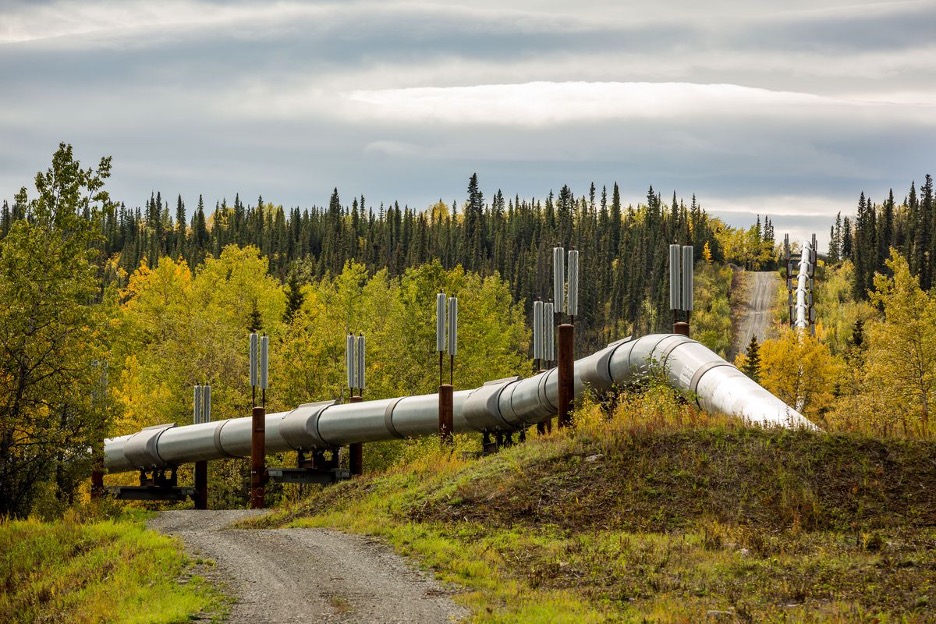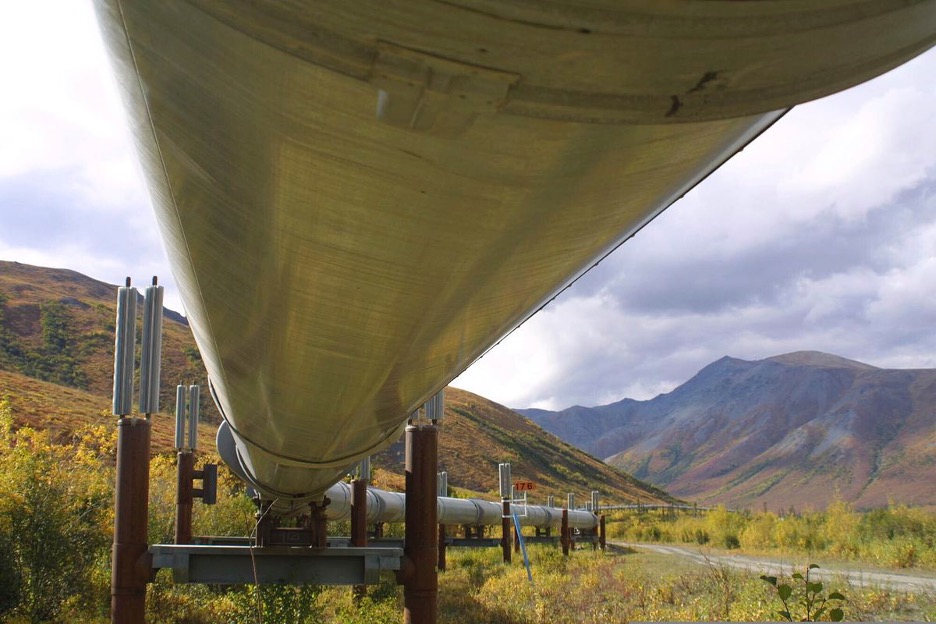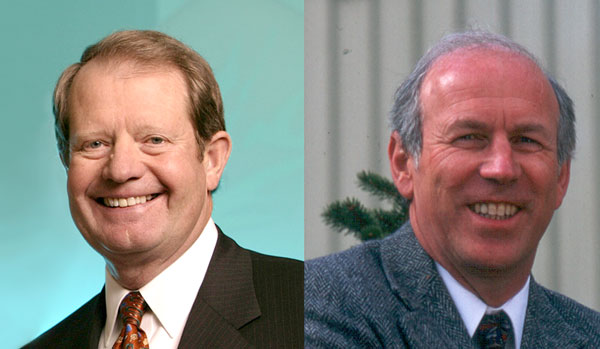Bradner’s 01.06.2025 Economic Report
Analysis: New carbon rules could disadvantage Alaska State’s new sequestration programs will help
Summary:
- Alaska production set to increase as its West Coast market shrinks
- New carbon rules for refiners put Alaska at disadvantage
- State pursues carbon capture to enhance value, sees new Asia markets
Alaska crude oil production is set to increase with new projects under construction. However, there are questions as to where the new oil will go and whether new clean fuel standards in West Coast states could devalue Alaska crude oil.
California and Washington state refineries are now required to calculate the carbon intensity of crude oil they purchase, and Alaska doesn’t do well in the rankings. “Alaska oil could be competitively disadvantaged,” said Nicholas Fulford, an analyst with Gaffney Cline, a consulting firm.
The calculation includes the complete production cycle from production operations, pipelines and tanker shipments, all which put Alaska crude at a disadvantage compared with conventional crudes and shale oil from western states and Canada. Alaska scores at 15.9 in the Washington carbon intensity rankings compared with 8.4 for western Canadian crude oil and 9.3 for North Dakota oil, said Anthony Pennino, an Anchorage-based energy consultant. Canadian oil sands crude has the worst ranking, at 23.
Carbon calculation includes complete production cycle
These rankings measure carbon emissions along the production and supply chain and shouldn’t be confused with quality measures of the oil itself, such as the API gravity. Much of Alaska’s disadvantage in the carbon ranking comes from the emissions from North Slope production plants, Pennino said. When they buy crude oil with higher carbon intensity scores, like from Alaska, the new rules require refiners to purchase offsets to reduce the carbon intensity of the supply chain, which imposes a financial penalty.
Washington state’s standards will tighten under legislation passed in 2021. Fuel suppliers will have to show a 20% decrease in carbon intensity below 2017 in the supply chain by 2037, using 2017 as a base year under the Washington statute. “As these standards become more stringent, they will significantly affect the value of Alaska’s crude oil,” said Frank Paskvan, an affiliate professor with the University of Alaska Fairbanks, who is advising on carbon capture projects.
Closing of refineries in California tightens market
The California and Washington state carbon rules aren’t the only problem facing Alaska producers. Recent closings of refineries in California and the shift of demand for lighter-grade crude oil have knocked Alaska out of a market there it once dominated. In the Pacific Northwest, where Alaska is still the main supplier, refineries have access to increasing volumes of shale oil, which have lower carbon intensity scores than Alaska crude. All this means more North Slope oil that may suffer under the new carbon rules will be coming into a shrinking West Coast market the state once dominated.
Alaska officials estimate the state’s current production, now about 480,000 barrels per day (b/d), could reach 600,000 b/d and more with new North Slope projects starting in late 2025 and 2026 and continuing to 2029. Incoming U.S. President Donald Trump hopes to boost it further. Trump promises to open up prospective places in northern Alaska including the Arctic National Wildlife Refuge, or ANWR, and send a flood of new production into domestic markets and Asia. It remains to be seen how industry will react to Trump’s initiative.
But Trump may be right about Asia. Occasional shipments are now made from Alaska to Japan and China when spot markets make it advantageous, said Ryan Fitzpatrick, commercial analyst in Alaska’s Department of Natural Resources, or DNR. “We see Asia as a potential growth market,” as North Slope production ramps up, he said.
West Coast refineries diversified as Alaska production dropped
In the 1980s and 1990s Alaska supplied almost all crude oil imported into California and the Pacific Northwest after the Trans Alaska Pipeline was built and when North Slope oil fields were flush, said John Crowther, deputy commissioner in Alaska’s DNR. This changed as North Slope fields declined over the years. The state now produces about 25% of the 2 million b/d it did in the 1980s. This forced West Coast refineries to diversify their sources of supply. As Alaska producers now prepare to increase output they may find it difficult to regain market share.
There are also fewer refineries. Some in California have shut down due to tightening environmental standards while others are blending crude oil with lighter fuels like ethanol to better meet new rules. Also, North Slope producers are no longer selling to West Coast refineries they owned, and which were captive customers. For years much North Slope oil went to ExxonMobil’s refinery at Long Beach, Calif. and BP’s at Cherry Point, Wash. But producers shed refineries over the years. ConocoPhillips, a major Alaska producer, sold off downstream assets, as has ExxonMobil in California. BP still owns Cherry Point but it is no longer an Alaska producer. Marathon Petroleum, which has a Washington state refinery, does not have its own production. It is a spinoff from Marathon Oil, which was once an Alaska producer.
West Coast refineries were designed to process North Slope crude which still makes it efficient to process it. Also, a fleet of U.S.-built Jones Act tankers have operated for years between Alaska and the West Coast. These tankers are dedicated to the Alaska and Pacific Northwest trade, but they are aging and will have to be replaced with costly new Jones Act tankers if Alaska is to stay in the game. But that capital cost will further challenge Alaska producers in keeping Alaska oil competitive and defending a shrinking market share and it may encourage them to look to Asia where the Jones Act doesn’t apply.
Also, some of the new Alaska production will come from companies new to the state and who don’t have West Coast relationships or Jones Act tankers. Australia-based Santos, Ltd. and Repsol, based in Madrid, have their new Pikka field under construction, which will start up in late 2025. The two companies are likely to expand their production because they have discoveries on nearby leases. Some of this oil may be going to Asia, where Santos has relationships with refiners.
ConocoPhillips is meanwhile developing its new Willow field on the North Slope and has relationships with West Coast refineries and access to Jones Act tankers. It will likely work its new supply into the West Coast, which may back out other supply.
Alaska taking steps to make Alaska oil more competitive
DNR Deputy Commissioner Crowther said Alaska is taking steps to defuse any competitive disadvantages with West Coast refineries. Companies like Santos Ltd. and Repsol are working on plans to capture carbon dioxide from production plant emissions and sequester it, and the state has approved underground storage of carbon dioxide on state lands, Crowther said. An Arctic Slope Regional Corp. technical services subsidiary is leading a group involving Santos and Repsol working on a North Slope carbon capture and underground storage project. The carbon would be captured from emissions from oil process plants and power plants, a technology that is proven, but expensive.
Removing carbon from the overall production cycle will raise Alaska’s score in the Washington state and California carbon intensity scoring and lessen a disadvantage in its production. The goal is to remove a penalty and possibly get a premium, Crowther said. Fulford, of Gaffney Cline, thinks this will work, pointing to carbon capture now done with ammonia produced on the U.S. Gulf coast that results in a premium paid when the ammonia is exported to Europe, where the European Union has carbon intensity scoring not only on imported petroleum-related products but all products. The California and Washington state carbon intensity scoring does not yet have scores for separate North Slope fields. The North Slope oil now gets one overall ranking. But field-by-field scores could be coming. Lowering the North Slope score overall will take more than what Santos and Repsol can do. The score is mainly driven by emissions from the big Prudhoe Bay field processing plants and power station, we’re told. A carbon capture project there will require Prudhoe owners Hilcorp, ConocoPhillips and ExxonMobil to get on board with the investment needed.



